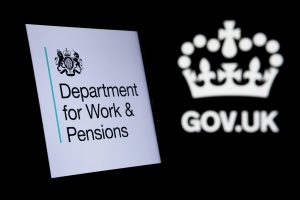Five takeaways from the DWP’s review of TPR
The DWP recently published the outcome of its review of TPR. The report concludes that TPR is “broadly well-run and well regarded” and has a “strong relationship with the DWP”. Notable successes include the implementation of automatic enrolment. Against this “positive backdrop” the DWP makes 17 recommendations for improvement across risk and growth, compliance and enforcement, as well as digital transformation and value for money.
Here are five key takeaways from the review:
- A growing remit for TPR – TPR’s remit extends to trust-based schemes and employers in relation to their auto-enrolment duties, but there are many other players in the “pensions supply chain”. TPR’s Supervision team currently engages with three pension scheme administrators on a voluntary basis. However, the review is critical of this approach on the basis that it is “an unsatisfactory half-way house”, as TPR has “no hard powers to act if it has concerns”. The review goes on to recommend that the DWP works with TPR to assess the case for extending TPR’s remit to cover pension administrators.
- A formal objective in respect of financial stability? – Following on from last year’s LDI crisis, the review looks at how TPR fits into the wider regulatory framework around financial stability. This framework has historically been more focused on banks and, to a lesser extent, insurers and is overseen by HMT and the Bank of England’s Financial Policy Committee (FPC). Recognising previous recommendations that TPR be given a more formal duty regarding financial stability, the review recommends that TPR, HMT and the DWP determine how this could best be achieved and what extra powers, resourcing and information TPR would need.
- Formal standards and authorisation for professional trustees – The review notes that some stakeholders have called for requirements for schemes to appoint professional trustees, to have stricter standards for what it means to be a professional trustee, and for there to be a register of professional trustees (with the ability to strike off unsuitable individuals). However, at the same time, it notes that there are currently fewer professional trustees than there are schemes, so TPR could not go as far as mandating that all schemes appoint a professional trustee.
This problem is expected to ease with the increase in scheme consolidation. On the flip side, the review recognises that more consolidation also means there may be less incentive for people to qualify as professional trustees in the future if the market is shrinking. In terms of next steps, we can expect to see more from the DWP and TPR in the short-term on trustee capability, and perhaps with regards to their ability (and confidence) to invest in a wider range of assets. TPR is also expected to publish guidance on investing in private markets by the end of the year.
- A closer relationship with the FCA – Speculation about the possibility of TPR being merged into the FCA resurfaces from time to time, with the review acknowledging that TPR’s split responsibility for pensions regulation with the FCA is “a result of history more than design”. But while the status quo may not be “optimal”, there is no urgent case for change. As things stand, therefore, the review stops short of advocating a merger, on the basis that this would be easier said than done. With the review recommending instead that TPR and the FCA continue to work collaboratively (whilst the DWP and HMT keep this under review), the lines between the two regulators’ remits could continue to become increasingly blurred.
- Changes to TPR’s approach to enforcement – While TPR’s focus on enabling and supporting compliance is effective, the review concludes that TPR should be “known to be willing and able to use its enforcement powers when necessary”. Given this, we may also see an even clearer, quicker and tougher TPR emerging going forward. In conjunction with this, the review also suggests that the DWP considers the case for simplifying the regime for use of financial support directions (FSDs) at the next opportunity.
There is one fairly significant caveat to note about all of the above: the review of TPR was finalised before the Chancellor’s Mansion House speech and the more recent Autumn Statement, where a series of pensions measures were announced which, among other goals, aim to boost saver outcomes and increase investment in productive assets.
One aspect of the Chancellor’s speech which dovetails nicely with the review of TPR is the continuing focus on trustees’ skills, capability and culture. The call for evidence published as part of the Mansion House “avalanche” of reforms builds on the theme of trustees having the right knowledge and skills to consider the full breadth of available investment opportunities and potential requirements that could be imposed in relation to professional trustees. Could this be an indication that formal standards (particularly around the investment of pension scheme assets) and some form of authorisation for professional trustees is one step closer?









